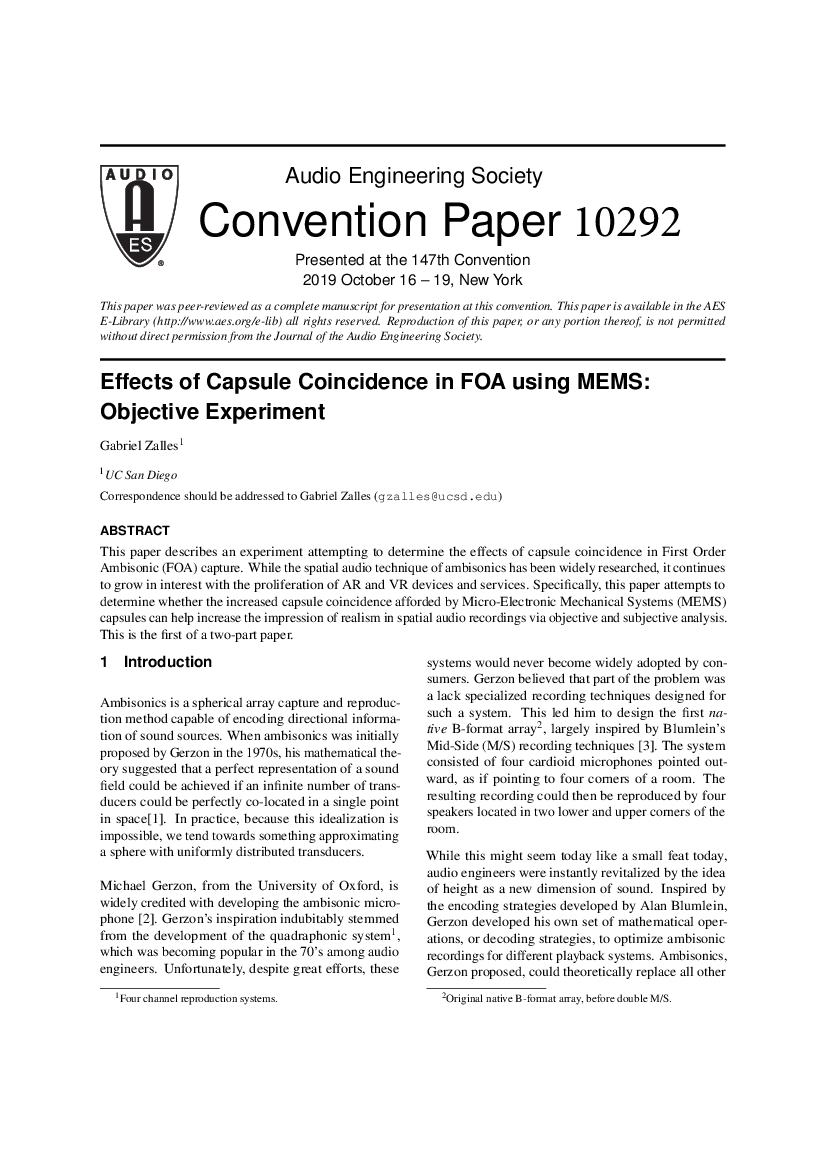Home / Publications / E-library page
You are currently logged in as an
Institutional Subscriber.
If you would like to logout,
please click on the button below.
Home / Publications / E-library page
Only AES members and Institutional Journal Subscribers can download
This paper describes an experiment attempting to determine the effects of capsule coincidence in First Order Ambisonic (FOA) capture. While the spatial audio technique of ambisonics has been widely researched, it continues to grow in interest with the proliferation of AR and VR devices and services. Specifically, this paper attempts to determine whether the increased capsule coincidence afforded by Micro-Electronic Mechanical Systems (MEMS) capsules can help increase the impression of realism in spatial audio recordings via objective and subjective analysis. This is the first of a two-part paper.
Author (s): Zalles, Gabriel
Affiliation:
University of California, San Diego, La Jolla, CA, USA
(See document for exact affiliation information.)
AES Convention: 147
Paper Number:10292
Publication Date:
2019-10-06
Import into BibTeX
Session subject:
Spatial Audio, Part 3
Permalink: https://aes2.org/publications/elibrary-page/?id=20665
(3819KB)
Click to purchase paper as a non-member or login as an AES member. If your company or school subscribes to the E-Library then switch to the institutional version. If you are not an AES member Join the AES. If you need to check your member status, login to the Member Portal.

Zalles, Gabriel; 2019; Effects of Capsule Coincidence in FOA Using MEMS: Objective Experiment [PDF]; University of California, San Diego, La Jolla, CA, USA; Paper 10292; Available from: https://aes2.org/publications/elibrary-page/?id=20665
Zalles, Gabriel; Effects of Capsule Coincidence in FOA Using MEMS: Objective Experiment [PDF]; University of California, San Diego, La Jolla, CA, USA; Paper 10292; 2019 Available: https://aes2.org/publications/elibrary-page/?id=20665